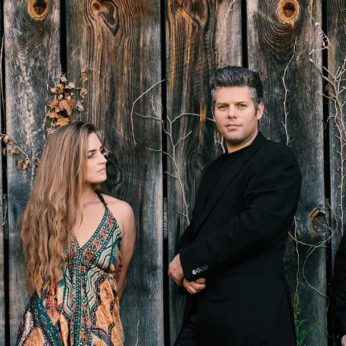Composer: Richard Strauss (b. 1864 - d. 1949)
Performance date: 07/07/2016
Venue: St. Brendan’s Church
Composition Year: 1941
Duration: 00:11:31
Recording Engineer: Richard McCullough, RTÉ lyric fm
Instrumentation Category:Sextet
Instrumentation Other: 2vn, 2va, 2vc
Artists:
Kelemen Quartet (Barnabás Kelemen, Gábor Homoki [violins], Katalin Kokas [viola], Dóra Kokas [cello]) -
[quartet]
Lawrence Power -
[viola]
Ella van Poucke -
[cello]

A recent biography of Richard Strauss has a
photo on the cover of the smiling composer shaking hands with a grinning
Goebbels. Apologists have tried hard to cover up Strauss’ undoubted complicity
with the Nazi regime and the myth is still promulgated that he at first
reluctantly co-operated with the Nazis and then tried to ignore them. In a
number of crucial high-profile international incidents early in the Nazi
regime, Strauss took the place of conductors like Walter, Furtwängler and
Toscanini when they made a stand against the regime’s anti-Semitic policies.
But worse than this, he accepted with enthusiasm Goebbels’ offer of the post of
President of the Reichsmusikkammer,
which had been set up to ensure the racial purity of all German musicians.
Though Strauss was not involved in the day-to-day execution of this grisly
business, he gave the regime the support of his reputation as
greatest living composer and throughout the period 1933-45 he remained the
Nazi’s foremost cultural asset. This is in direct contrast to Karl Hartmann, who
also remained in
throughout the period, but refused to allow any of his works to be played in his
homeland during the Third Reich.
Strauss possessed an extraordinary
arrogance, a self-awareness that bordered on the megalomaniac. He simply saw
himself as superior, above the mire of politics and beyond conventional issues
of morality and responsibility. His supreme confidence and self-belief and his
understanding of his significance in
him to welcome the Nazi’s embrace. In the end it was the destruction of the
cultural centres of
and
the burning of the Vienna State Opera that finally drove him to despair. His
final disillusionment with the Nazis did not come until Goebbels closed all the
theatres and the opera houses in the last months of the War. Strauss had been
wooed by Hitler’s promise of cultural renewal and not until he was able to
experience for himself the effects of Hitler’s failure as a social, military
and cultural messiah, did the scales fall from his eyes and enable him to see
the enormity of the tragedy that had befallen his country. His answer was Metamorphosen, described by some as the
saddest music ever written.
Capriccio
is Strauss’ operatic swansong, completed in 1941 and premiered in
the height of the War. The opera is a conversation
piece set in eighteenth-century
importance of words and music in opera. His ability to turn away from the grim
realities of war was remarkable, but to write music of such beauty while so
many crimes were being committed in the name of a
so much shows distressing moral detachment. The string sextet serves as an
unusual chamber music prelude to the opera, where it poses the opera’s thematic
question – is it the poem or is it the music?
Strauss originally conceived Metamorphosen for seven strings. It was
only when he received the commission from Paul Sacher to write a work for a
larger string group that he changed his mind and scored it for twenty three
solo strings. In 1990 the original short score was discovered and a full
realisation for string septet was made by Rudolph Leonard and premiered in
1994. The idea for this extraordinary lament came from a poem by Goethe Niemand wird sich selber kennen, but
Strauss puts a cruel, nihilistic twist upon Goethe’s essentially optimistic
view that metamorphosis would lead to self-knowledge and harmony. At no point
in the score does Strauss develop his foreground themes, there is no variation,
no progress and no metamorphosis. This nihilistic cultural despair is set
within an ever-shifting chromatic transformation of a single underlying
harmonic motive associated with Goethe’s poem. Two of themes have specific
musical associations, one recalls the Funeral March from Beethoven’s Eroica, the other the terrible lament by
the betrayed King Mark in Act II of Tristan
und Isolde, both quotations open to many interpretations. What is beyond
question is Strauss’ horror at the aesthetic and cultural ruin of his world,
whether he was unselfish enough to mourn the human cost of the previous twelve
years must remain open to doubt.
Copyright © 2025 West Cork Music. All rights reserved.
Designed and developed by Matrix Internet